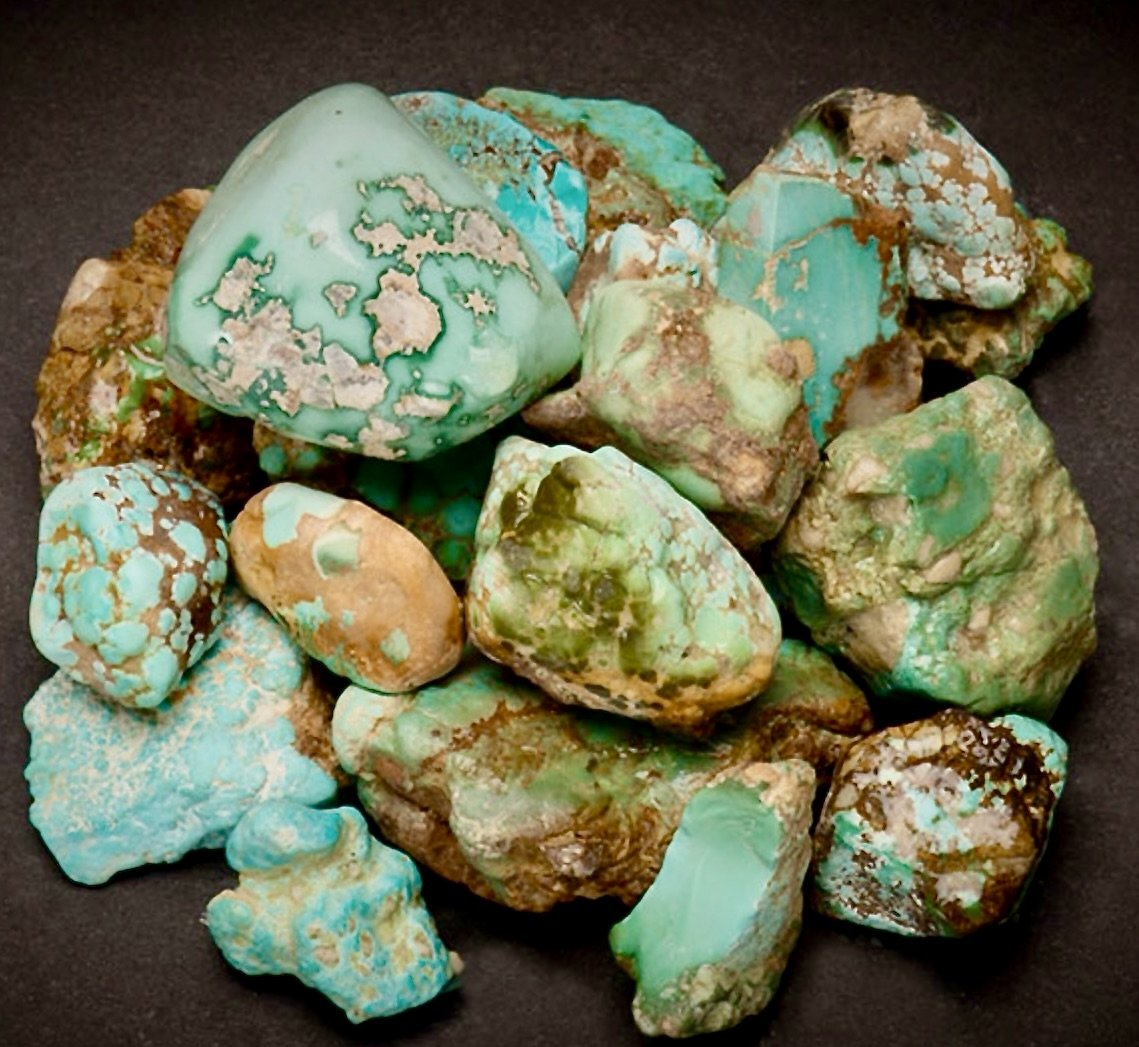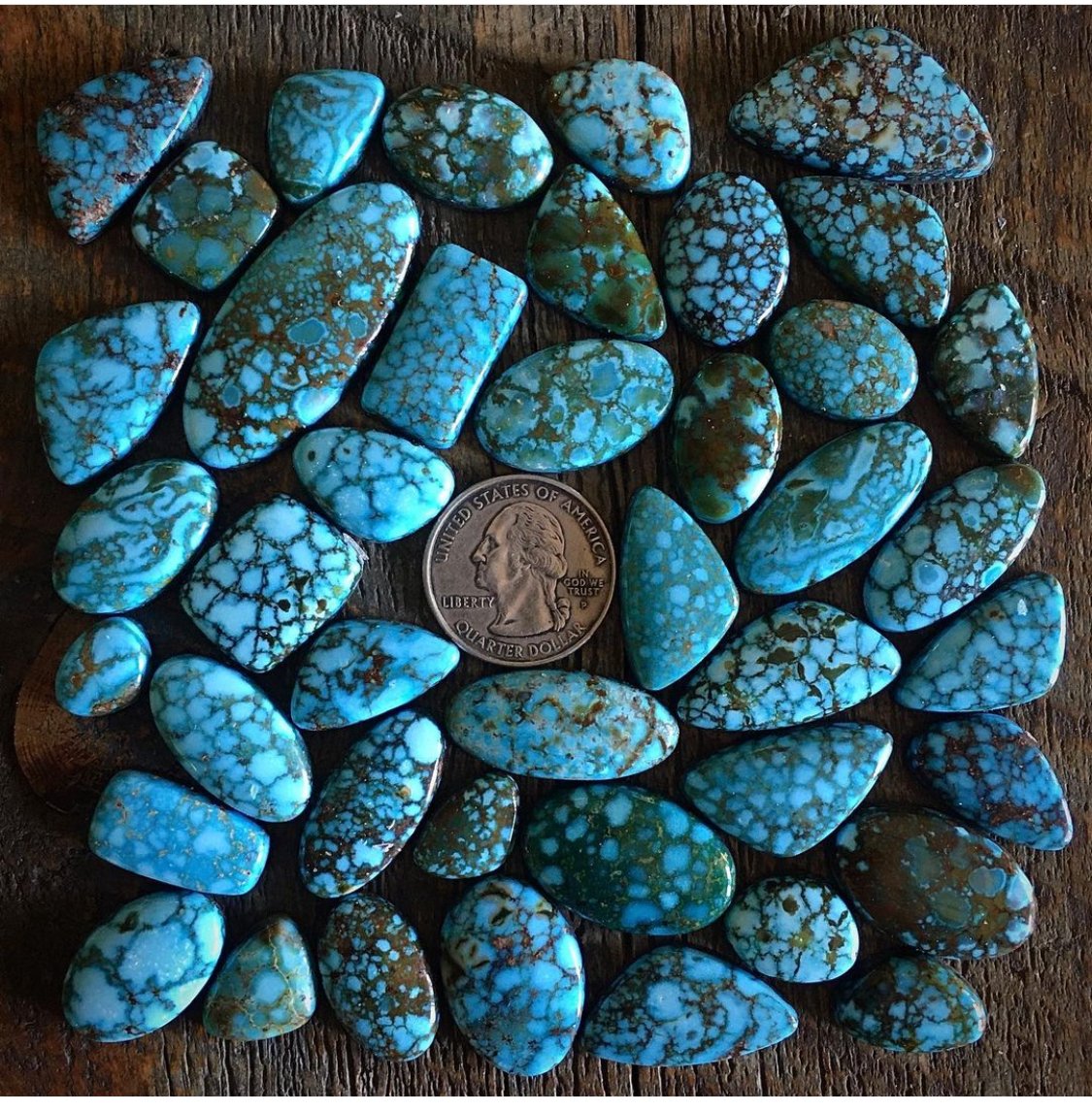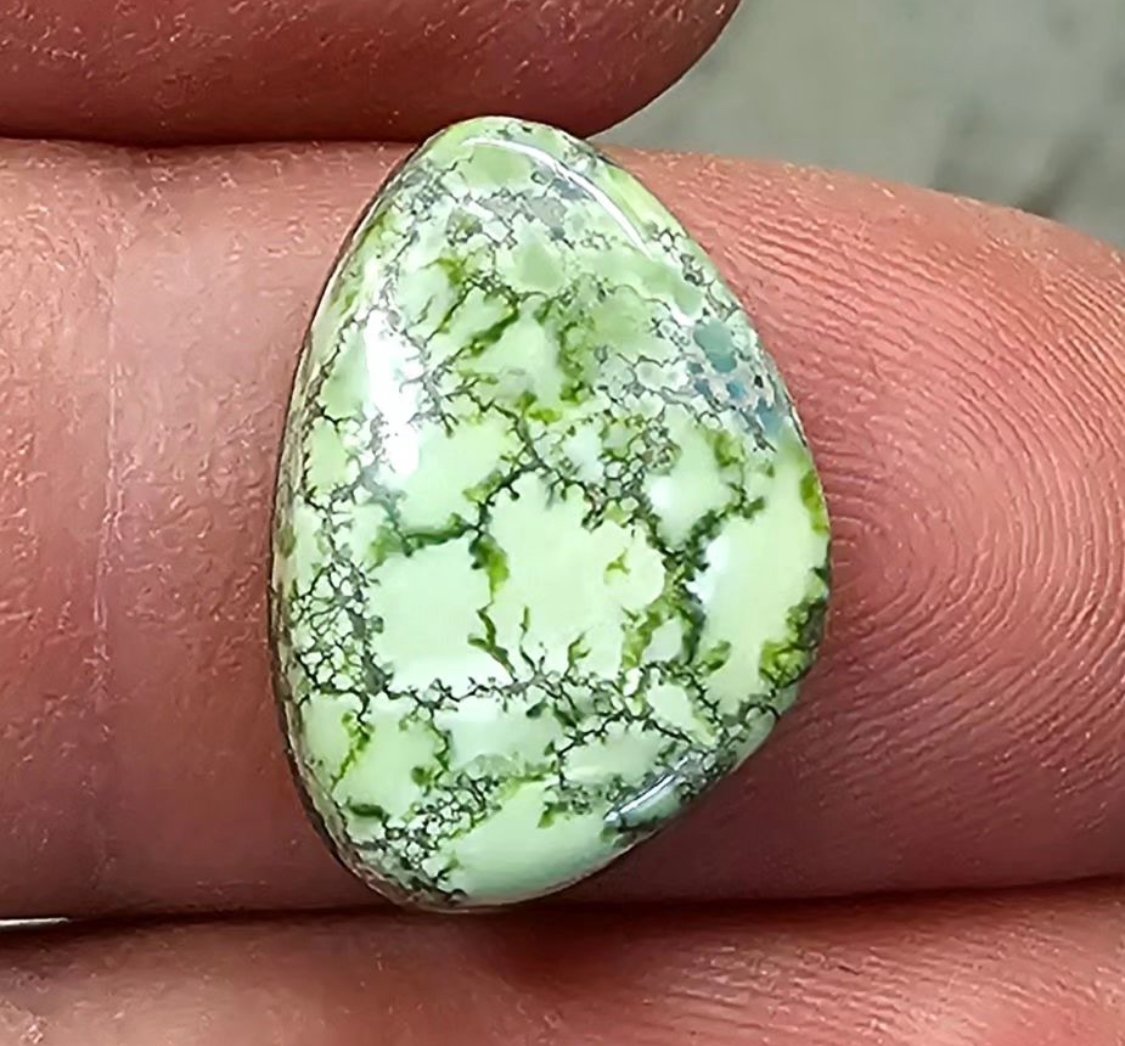Golden Hills - The only NON American Turquoise I use…because it well GORGEOUS! The Altyn-Tyube ("Golden Hill" in the Kazakh language) mountain range is located in Kazakhstan about 200 miles South of the Russian border. This is where the original Golden Hill mine is located. Another 200 or so miles South brings us to the more recently discovered Lavender mine. The rough turquoise from both mines tends to get mixed together, so all of the material is generally marketed as Golden Hill turquoise.
Mining this turquoise is extremely difficult. Being mostly tunnels and shafts, the miners can only work in the winter months when the ground is hard enough not to collapse in on itself. Amongst the falling snow and howling winds.
Kings Manassa - My homestate turquoise! The King's Manassa turquoise mine, or more accurately the "King Turquoise Mine", is located near Manassa, Colorado. It is one of the many turquoise deposits which was actively mined by Native Americans for centuries. I.P. King rediscovered the mine in 1890, and the King family has operated it ever since. I am lucky to say the collection I have all comes directly from the King family! The Manassa turquoise mine produces an incredibly wide range of colors and qualities, from deep emerald greens to deep sky-blue. The best stones feature a rich golden-brown matrix with some spider-webbing. The mine is not currently active, so Manassa turquoise is quite rare on today's market.
Pilot Mountain - The dreamy rich greens are just to die for! This mine is located in western Nevada, east of the small town of Mina. Pilot Mountain turquoise forms in hard veins with color ranging from bright blue to dark blue with a greenish cast. The matrix is typically composed of dark brown limonite mottled patterns. Most Pilot Mountain turquoise is called “grass roots”, meaning the best deposits are found within ten feet of the surface. Although the Pilot Mountain mine is considered an active mine it is a very small operation. While Pilot Mountain is considered an active mine it is a very small operation, and i’ve got some!
Number Eight - #8 turquoise mine in Eureka County north of Carlin, Nevada was discovered in 1925 and first mined in 1929. At present, the mine is closed to turquoise mining, so very hard to find. The mine produced some of the largest nuggets of turquoise ever discovered. Almost all the turquoise produced is of the spider web type, with the matrix varying from golden brown to black. The colors grade from very light blue to very dark blue, some with interesting tints of green. As with most mines, Number 8 turquoise has certain characteristic colors and matrix patterns that are very easily identified.
TURQUOISE! This is my favorite part of my business. Let me tell you a little about it. There are literally hundreds of turquoise mines located across the Southwestern United States as well as in Mexico, China, Persia, and Australia. I primarily use American Turquoise, a few from Mexico and one international, Golden Hills turquoise all the way from Kazakhstan!
Royston - With out a doubt one of my favorite stones. Royston Turquoise comes from the Royston mining district located near Tonopah, Nevada and has been mined since the early 1900s. The Royston mine produces some incredible turquoise ranging in color from a deep sky blue to dark greens. Often the colors run together in the same stone with the golden brown mottled or webbed matrix. The mines produce some very high grade material, but in limited quantities, so scoop it up while you can!
Kingman - A close second in my favorites list! Aside from the fate that this mine is about an hour from my sisters house in northern Arizona so I visit often, it is well known for producing incredible turquoise with a variety of color ranging from pale green to light and deep blue with red, brown, black or yellow matrix. it is now operated by the Colbaugh family, and is the last remaining commercially producing mine in the United States. Evidence suggests turquoise was mined in the surrounding areas dating as far back as 600 AD.
Carico Lake - Absolutely gorgeous turquoise! This mine is named after the dried up lake bed in Nevada where this unique material is mined. The mine produces a wide variety of turquoise ranging in color from dark blues to light greens, some with yellow or dark blue "water" webbing. Most sought after is the intense apple green material. Identified as faustite, it is a cousin of turquoise containing more Zinc which causes the color.
Fox - Once called the Cortez mine, is found in Lander County, Nevada. It WAS one of the largest producing mines in Nevada. The location was known to Native Americans in the area for centuries, but the first official claim was filed in 1914. Fox Turquoise can be found in various shades of green and blue with both often occurring in the same stone. The mine is no longer in operation, so what’s out there is it, and i’m lucky enough to have a good supply in my collection!









